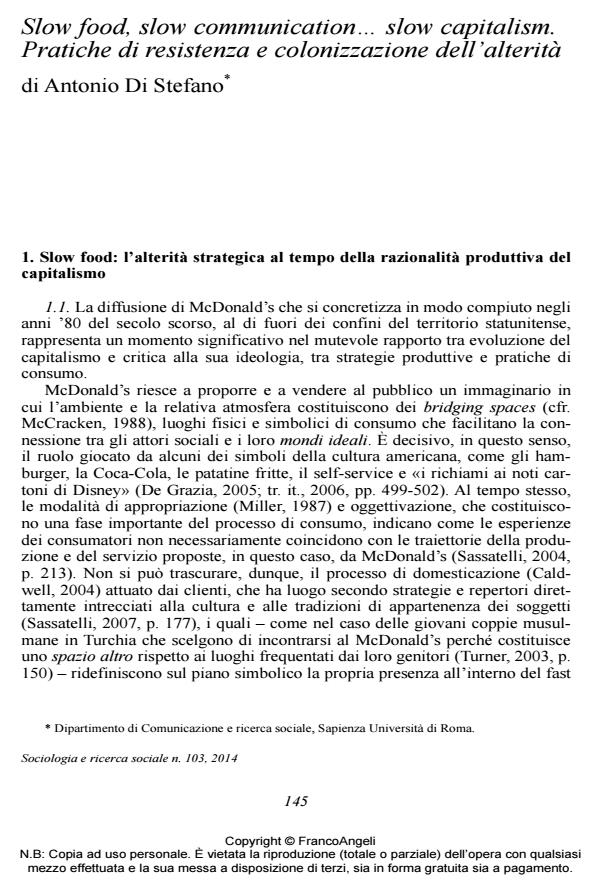Slow Food, Slow Communication Slow Capitalism. Practices of Resistance and the Colonization of Alterity)
Journal title SOCIOLOGIA E RICERCA SOCIALE
Author/s Antonio Di Stefano
Publishing Year 2014 Issue 2014/103
Language Italian Pages 21 P. 145-165 File size 100 KB
DOI 10.3280/SR2014-103007
DOI is like a bar code for intellectual property: to have more infomation
click here
Below, you can see the article first page
If you want to buy this article in PDF format, you can do it, following the instructions to buy download credits

FrancoAngeli is member of Publishers International Linking Association, Inc (PILA), a not-for-profit association which run the CrossRef service enabling links to and from online scholarly content.
The slow movements offer an alternative life project in comparison to the mainstream paradigm of homo faber and homo communicans, and criticize capitalism that appears in the form of a perverse mechanism capable of colonizing vital spaces of individuals, through the dissimulation of its own power. The «new spirit of capitalism» suggests that the stigma and criticism to which capitalism is subjected is what bring its ability to reproduce and renew itself. The following paper will analyze the specific ways in which slow movements have become important «narrative representations», revealing their deep connection with the «dominant grammar» of the capitalist matrix.
Antonio Di Stefano, Slow food, slow communication slow capitalism. Pratiche di resistenza e colonizzazione dell’alterità in "SOCIOLOGIA E RICERCA SOCIALE " 103/2014, pp 145-165, DOI: 10.3280/SR2014-103007